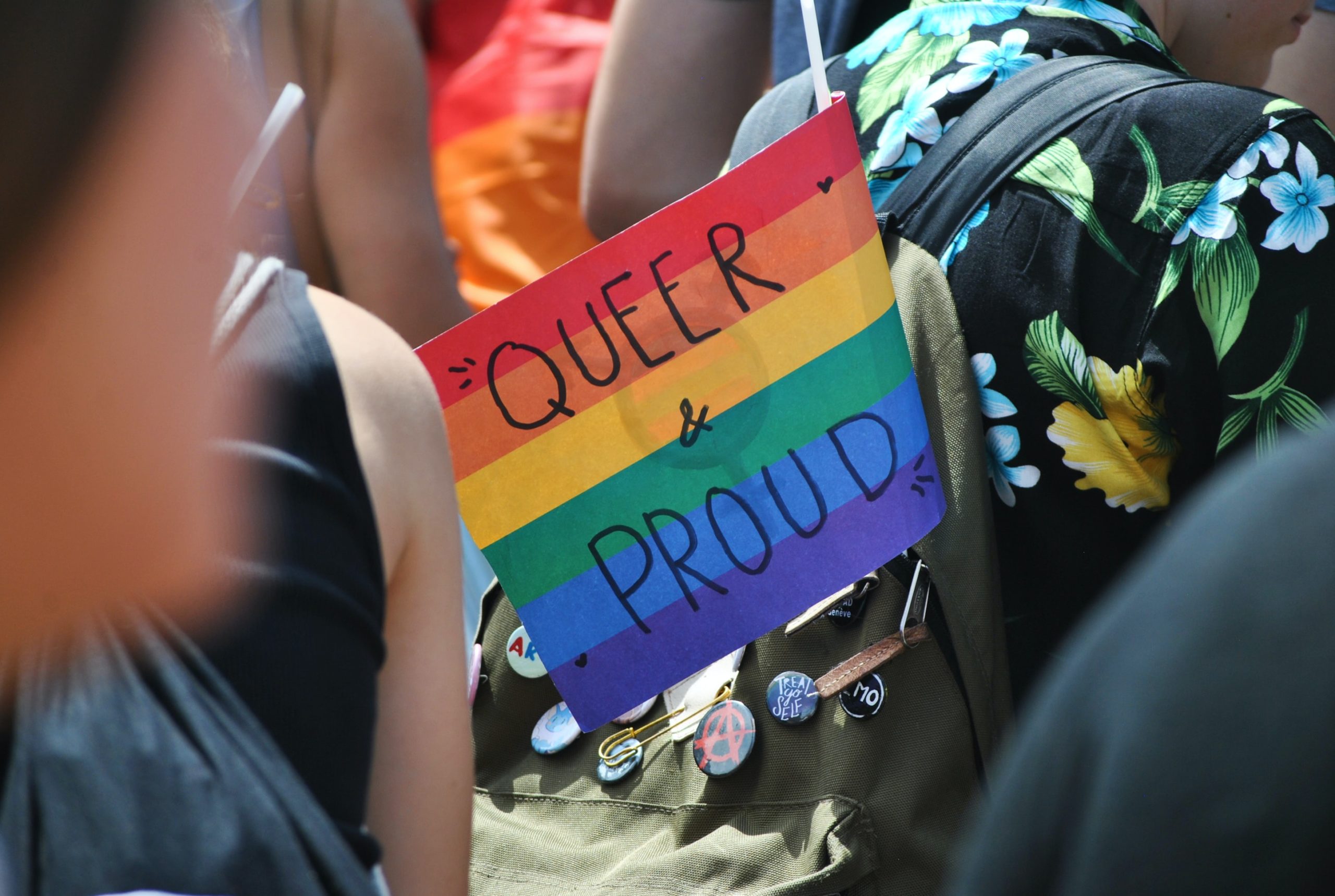Written by James Taylor (He/Him)
Photo by Delia Giandeini on Unsplash
CW: Discussions of Homophobia, Racism, Transphobia, Body Shaming and Misogyny
We all love a gay icon, don’t we? Queer history is currently blooming with the fruits of reclamation and reinvestment in the study of queer figures who paved the rainbow brick road for us all to travel on. However, among all the flourishing Marsha P. Johnsons and Alan Turing’s, there are some unpleasant weeds lurking in the undergrowth. We all love a hero, a story of triumph and overcoming – but what about those more unpleasant figures, the unfortunate individuals we would rather pluck out of the garden of queer historicism? A podcast, aptly titled Bad Gays, led by queer historians Ben Miller and Huw Lemmey, seeks to address the more unsavoury gays of history to determine their place within it, but what makes a ‘bad’ gay and what can they teach us about queer responsibilities today?
As they note, ‘bad’, is a very broad term. The podcast goes from folk we might describe as complicated, or perhaps problematic, to people whose repulsive misdeeds are clearly beyond the point of redemption. Someone this applies to would be Ernst Röhm, one of the first openly gay politicians, but one who served under Hitler. As I go from episode to episode, I discover new villains like Elmyr de Hoy and Violette Morris – devious art forger and fascist torturer respectively – who illuminate details about figures I thought I knew. We never covered in History 1A that James Vi and I were gay, although it detailed King James’ obsessive persecution of ‘witches’. Following up is Roy Cohn – as bad an egg as you can get – he led the purge of queer officials in the United States government during the 1950’s ‘Lavender Scare’ as a closeted gay man (and who also mentored Donald Trump in his early business career). It makes for toe-curling listening.
So why should we include any of these figures within our narrative of queer history? Our understanding of LGBT history tends to focus on the activists, the champions of equity, and rightly so. We would not be at the place we are today without them, and the villains of history have no right to sit beside them – it’s more about including them within conversations about queer identity for Miller and Lemmey. Take Andrew Sullivan, one of the Bad Gay squad. He was a gay conservative journalist and one of the first of his kind to advocate for gay marriage rights back in the 1980’s, but he has often been accused of attempting to make queer people fit a heterosexual social model, rather than achieve lasting social change on queer terms. He also has a decidedly checkered history on racial issues.
It’s deeply frustrating; you just think, why did you have to go and ruin it for us? But then, who is ‘us’ and what do we demand of our historical figures? Sullivan – who isn’t exactly historical – represents the rich, white, conservative gay crew, so why would we want him to be a spokesperson for the entire LGBT community anyway? He is perhaps so famous because his queer politics were palatable to the conservatives who opposed gay rights, but he continues to be a bewildering figure – he supported Margaret Thatcher, the High Priestess of homophobia! How can we possibly claim him? But instead of reclamation or forgiveness, can these figures can teach us more than a neutral hero can.
Perhaps to answer this ever-growing list of questions, we might take a look at the recent scandal engulfing London Pride, currently scheduled to take place in September. It’s most senior black official, Rhamel Afflick, has resigned, prompting a further 20 resignations over claims the event ‘ignores black voices’ and other disturbing accounts of racism. Here, in what is meant to be the pinnacle of gay celebration, an unpleasant truth, long overlooked and ignored, has grown to such proportions as to engulf the entire event. Racism within the gay community has been written about extensively, as well as transphobia, fatphobia, and misogyny. White, gay, conventionally beautiful men are often posited as the gay community’s poster boys, papering over the toxicity that can make the LGBT community seem hostile to other individuals that deviate from this.
Examining these problematic figures then, is an acknowledgment that there are significant issues that lie within the LGBT community. Simply focusing on our unproblematic heroes doesn’t scrutinize these internal fissures, but only gives us an external cultural image that perhaps masks these divisions. As Miller and Lemmey argue, we are beyond the need of simplistic queer narratives that are fashioned for the sake of changing the minds of homophobes. Now, we need to push hard for intersectionality, universal representation, and this can come from a more nuanced internal conversation about our shared past. If we can’t face our problems, how will anything ever change?
References
https://tankmagazine.com/tank/2019/04/bad-gays/
https://www.vice.com/en/article/yw89yb/bad-gays-podcast-interview
https://open.spotify.com/show/0NPrqSLJNdVV1cugFBfQ8a?si=S2qDwXyLTlC721XbsdJk1A
https://www.pinknews.couk/2021/03/22/pride-in-london-bi-uk-bisexual-racism-bullying/

